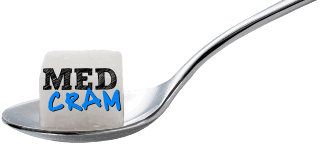In this video from MedCram, Dr. Seheult discusses how what you wear outdoors can affect your exposure to UV and NIR light. The near infrared radiation spectrum ranges from 760 nm to 1400 nm. Ultraviolet light ranges from 290 nm to 400 nm. Ultraviolet light is a little bit of a mixed bag. Ultraviolet B is able to help make vitamin D in your skin but it can also cause skin damage as well as lead to skin cancers as can UVA light. UVC light typically does not make it through the atmosphere. When reviewing graphs that demonstrate which wavelengths cause the most amount of damage, the UVA/UVB wave spectrum has the highest incidence of damage to our skin. Now UVA/UVB as mentioned already, can have some benefits that include aiding in synthesis of vitamin D and some medical conditions can also be treated with UV light; however, generally speaking it is best to avoid these wavelengths. If you look at the damage caused by near infrared light, it is significantly lower. So the question arises, is there a way to develop clothing that can allow for the penetration of near infrared light while minimizing UV light exposure?
Societal exposure to NIR
In our society, exposure to near infrared light has been decreasing over the past century. This has come with changes in the type of lighting that we use as well as the type of glass that is used in our businesses. Back in the 1800’s, most everybody spent at least 50% of the time outdoors and received a lot of natural sunlight. As we moved into the 1900s, people started spending more time indoors as they started to work less on farms and more in cities. With the invention of the fluorescent lamps and energy efficiency improvements in windows over the year, the amount of near infrared radiation coming out of these has decreased to where we are today we have low E-glass windows, people spend most of their time indoors approximately 93%, and we have lights that do not emit any near-infrared light.
UV exposure
What is it that we can do now that will maximize our near infrared exposure while minimizing our UV exposure? The question comes up, can the clothes we wear affect the amount of UV and NIR light we absorb. Per a website from Utah on what clothing provides the best protection from UV light, they recommend a dense fabric as thickness is a key factor to allowing fewer UV rays to get through. Dark or bright colors such as black or blue will tend to absorb more UV rays than lighter shades like whites and pastels. The type of material also can have an effect with polyester and nylon being more protective than unbleached cotton or rayon. The more vivid the color, the greater the protection so for example they state that a bright yellow shirt will be more protective than a pale one.
NIR exposure
Near infrared light due to its longer wavelength has the capability of penetrating much more deeply into the tissue than UV light does. In a study by Zimmerman, it showed that NIR penetrated as deep as 8 cm into the skin. In a study from the Journal of Textile Science and Engineering, they found that materials such as cotton and polyester seem to allow the best amount of penetration of near infrared light. If you’re wearing one- two layers of clothing, the penetration of cotton and polyester remains good. Things that were found to decrease near infrared light included denim. One layer of denim decreased the penetration by almost 50%; however, the study showed that the more layers you wear of clothing, the less likely near-infrared light can penetrate. From a very practical purpose, most people do not wear multiple layers of denim clothing at the same time i.e. two pairs of jeans. The study did conclude that you needed to wear many layers of fabric (they went up to 13 layers) to try and impede the penetration of near infrared light. Some material like denim was harder to penetrate even with fewer layers. The color of the material can also make a difference in near infrared penetration. Overall if you are wearing multiple layers of fabric, the near infrared penetration declined regardless of color; however, they did find that green tended to allow less penetration which makes sense as most plants that are green tend to reflect near-infrared rather than absorb it. But overall color does not make a big impact in absorption if you wear 1-2 layers.
Timing of exposure
Another question that arises is whether there is an ideal time to get outside to get exposure to NIR while minimizing UV exposure. Due to how the sun rises and sets, the best time to get the exposure to near infrared light is often at sunrise and sunset. This works out well as this is also the time when there is the least amount of UV exposure that is happening. UV exposures are typically highest in the midday. If you can get your near infrared light on the periphery of the day i.e. sunrise and sunset you can do so without getting significant exposure to UV at the same time. If you do get sun in the midday, you will still get plenty of NIR but also plenty of UV light as well. Be sure to wear your sunscreen and sun protective clothing.
LINKS / REFERENCES:
Melatonin and the Optics of the Human Body (Melatonin Research) | https://www.melatonin-research.net/in…
Near Infrared Transmission through Various Clothing Fabrics (Journal of Textile Science & Engineering) | https://www.hilarispublisher.com/open.
